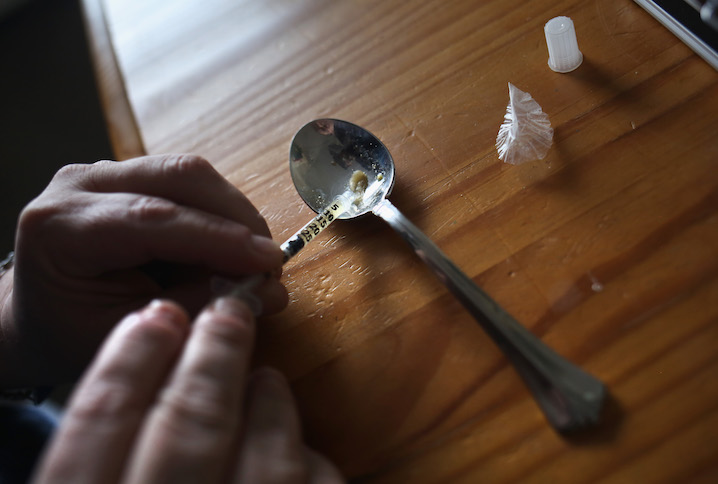Teens who admitted to abusing prescription opioids were substantially more likely to abuse heroin later in high school, a study published Monday in the Journal of the American Medical Association argues.
Prescription opioid abuse is a major public health challenge in the United States. Teens are by no means exempt; roughly 3.1 percent of 12- to 17-year-olds reported abusing prescription opioids at some point in 2017, a figure about equal to the rate of abuse in the 26-and-over population. Young adults who abuse prescription opioids are at risk of poisoning, up-to and including death: The CDC estimates that for every teen overdose death there are 119 emergency room visits and 22 admissions for treatment.
Relatively few young adults use heroin: The National Survey on Drug Use and Health estimates roughly 14,000, or 0.1 percent, of 12- to 17-year-olds used heroin in 2017. But heroin is substantially more dangerous than prescription opioids, and linked to other pathologies like Hepatitis C. As such, with prescription opioids relatively widespread in their availability, it is important to understand if there is a link between prescription opioid use and subsequent heroin use.
To understand this possible link, the authors of the study surveyed more than 3,000 high schoolers in ten high schools in Los Angeles twice a year for four years. Respondents were asked about their past-month and past-six-month abuse of prescription opioids "to get high" as well as their lifetime and past-six-month use of heroin.
To account for confounders, respondents were also polled on other drug use, as well as measures of age, race, sex, ethnicity, parental income, and family history of drug use. Respondents were also administered test batteries meant to measure depression and impulsive behavior.

The results were startling. Among those students who had never abused prescription opioids, just 1.7 percent had used heroin by the time the study completed. By comparison, 10.7 percent of those who reported ever abusing prescription opioids had used heroin, and 13.1 percent of those actively abusing at the end of the study had also used heroin.
The relationship shrank, but remained evident and statistically significant, when accounting for the controls the survey measured. Even with controls, individuals who had previously abused prescription opioids were twice as likely to have used heroin as those who didn't, and individuals currently abusing prescription opioids were three times as likely. The other factors significantly associated with heroin use were a family history of substance abuse, using other substances, and being female.
Although understanding why opioid abuse predicts heroin abuse was beyond the scope of the study, the authors do have some speculations. They suggest the state of adolescent brains—which develop pleasure-seeking habits faster than they develop decision-making skills—may have something to do with it. So too might social conditions, especially exposure to new students or, for students who take on a job, adult coworkers who use heroin.
Notably, few of the respondents demonstrated severe opioid use disorder, which suggests "the desire to alleviate opioid withdrawal mediated by opioid dependence was not a highly common mechanism of the transition to heroin use" among teens. Rather, the authors suggest the true draw may be opioids' "powerful euphoric effects."
"It is possible that youths who enjoy the euphoric effects from nonmedical prescription opioid use may become inclined to try heroin because of a desire to experience similar opioidergic intoxicating effects at a higher potency," the paper concludes.
